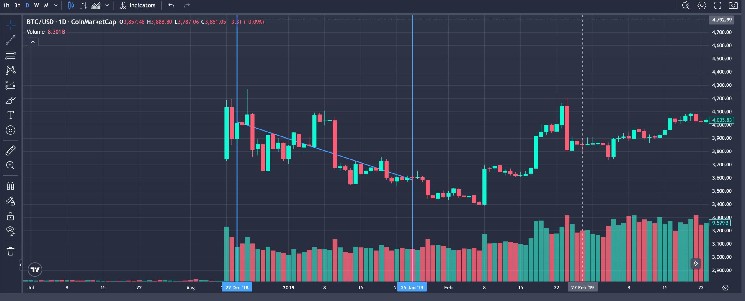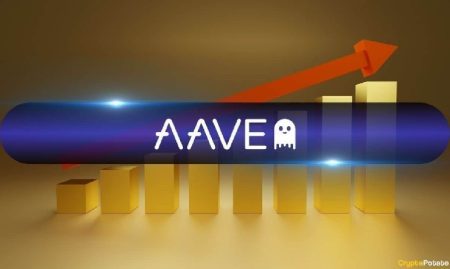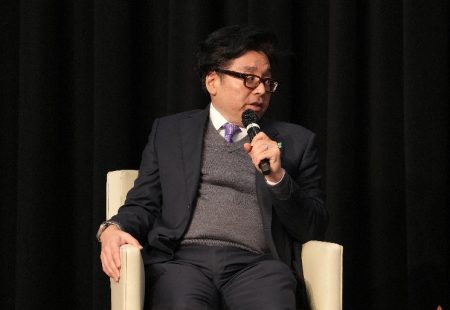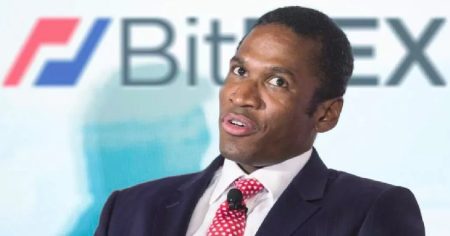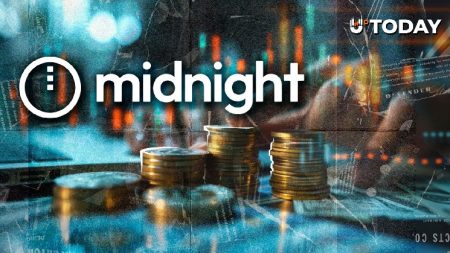Government Shutdown Looms: Bitcoin, Gold, and Silver Rally as Financial Markets React to Political Deadlock
Political Impasse Drives Investors Toward Safe Havens as Shutdown Probability Reaches 85%
The United States stands on the precipice of another government shutdown as congressional leaders remain deadlocked over federal spending and healthcare policy with just days remaining before the October 1 deadline. As political tensions escalate between Republicans and Democrats, financial markets are responding with notable shifts toward traditional and emerging hedge assets. Bitcoin, gold, and silver have all posted significant gains today, reflecting growing investor anxiety about potential economic disruption from a federal government closure.
According to prediction data from Polymarket, the probability of a government shutdown has surged to 85%, the highest level seen during this budget cycle. This dramatic increase in shutdown likelihood has triggered what many market analysts describe as a classic flight to safety, with investors repositioning portfolios to weather potential market volatility. The movement toward hedge assets accelerated after the latest round of negotiations between House and Senate leadership collapsed yesterday evening, with neither party willing to concede on key funding priorities.
“What we’re witnessing is a textbook example of how political uncertainty translates into market behavior,” explains Dr. Eleanor Westbrook, chief economist at Capital Insight Partners. “When government stability comes into question, investors naturally gravitate toward assets perceived as insulated from political turmoil. The simultaneous rally across both traditional safe havens like precious metals and newer digital alternatives like Bitcoin suggests a broad-based concern about potential economic disruption.” The parallel performance of these diverse asset classes marks an interesting evolution in investor strategy during periods of heightened political risk.
The current standoff centers primarily on disagreements over healthcare funding provisions and broader federal spending levels. Republican lawmakers have pushed for significant spending reductions across multiple agencies while demanding policy changes to certain healthcare programs. Democratic leadership has characterized these demands as overreaching and potentially harmful to essential government services. The increasingly bitter partisan divide reflects deeper philosophical differences about the role and size of government, with neither side showing significant willingness to compromise as the deadline approaches.
Bitcoin’s performance during this period of uncertainty has been particularly noteworthy, with the cryptocurrency gaining over 3% in the past 24 hours as shutdown probabilities increased. This movement reinforces Bitcoin’s evolving status as what some investors now call “digital gold” – an asset class that operates independently of government monetary policy. Traditional precious metals have similarly benefited, with gold reaching a six-week high and silver posting its strongest weekly gain since early summer. Market analysts note that this pattern differs somewhat from previous shutdown threats, when cryptocurrency markets were less developed and institutional involvement was minimal.
The potential economic impact of a shutdown extends far beyond these immediate market reactions. Government contractors face payment delays, federal employees may be furloughed without immediate compensation, and various economic reports and regulatory approvals could face postponement. These disruptions create a ripple effect throughout the economy, potentially affecting everything from consumer confidence to business investment decisions. Previous government shutdowns have cost the U.S. economy billions in lost productivity and economic growth, a reality that makes the current market hedging activity appear increasingly rational as the political stalemate continues with no resolution in sight.
Economic Implications Widen as Shutdown Deadline Approaches
The looming government shutdown carries significant implications beyond the immediate political drama playing out in Washington. Financial markets, already navigating a complex landscape of inflation concerns and interest rate uncertainties, now face the additional complication of potential government service disruptions. This multifaceted pressure has accelerated the movement toward hedge assets that began earlier this week as shutdown odds increased.
“What distinguishes this potential shutdown from previous episodes is the broader economic context,” notes Marcus Hernandez, senior market strategist at Global Investment Research. “We’re not operating in a vacuum – this political standoff coincides with ongoing inflation challenges, global supply chain pressures, and significant geopolitical tensions. The cumulative effect creates a perfect storm for investor anxiety, which explains the pronounced movement we’re seeing toward traditional and alternative safe havens.”
This anxiety manifests most visibly in the recent trading patterns of hedge assets. Gold has climbed steadily throughout the week, adding nearly 1.5% to reach $1,985 per ounce – its highest level since mid-August. Silver has performed even more impressively, gaining over 3% this week alone. Bitcoin’s trajectory has similarly pointed upward, with the leading cryptocurrency approaching the $28,000 mark after starting the week below $26,500. These concurrent movements suggest a broad recalibration of risk across multiple investor categories.
The appeal of these hedge assets during government shutdowns stems from their perceived independence from federal operations. While stocks may face pressure from delayed economic data releases, postponed regulatory approvals, or reduced consumer spending, assets like precious metals and cryptocurrencies operate through mechanisms largely separate from day-to-day government functions. This operational independence becomes increasingly attractive as political dysfunction threatens to disrupt normal economic activities.
Historical data from previous government shutdowns provides some context for current market behavior. During the 35-day shutdown of 2018-2019 – the longest in U.S. history – both gold and Bitcoin demonstrated relative stability compared to broader equity markets. This precedent helps explain why today’s investors appear to be making similar allocations as shutdown probabilities increase. However, market veterans caution that each shutdown occurs under unique economic circumstances, making direct historical comparisons imperfect guides for investment decisions.
The potential duration of any shutdown significantly influences its economic impact. Brief closures of a few days typically create minimal disruption, while extended shutdowns can substantially damage economic growth. The Congressional Budget Office estimated that the 2018-2019 shutdown reduced GDP by $11 billion, with about $3 billion representing permanent economic loss. Current political dynamics suggest that finding a quick resolution may prove challenging, increasing the risk of a prolonged closure and corresponding economic damage.
Political Brinkmanship Intensifies as Critical Services Hang in Balance
The path to the current shutdown threat follows months of deteriorating relations between congressional Republicans and Democrats. What began as routine budget negotiations has evolved into a fundamental standoff over national priorities, with healthcare funding emerging as a particularly contentious flashpoint. Republican lawmakers have demanded significant policy changes and spending reductions as conditions for supporting a continuing resolution, while Democrats have characterized these demands as excessive and potentially harmful to vulnerable populations.
“We’re witnessing political brinkmanship at its most consequential,” explains Dr. Catherine Montgomery, professor of political science at Georgetown University. “Both parties believe their position represents essential values, creating a situation where compromise feels like capitulation. The resulting stalemate has pushed shutdown probabilities to levels that financial markets can no longer ignore.”
This political deadlock has particular implications for government services deemed non-essential. While critical functions like national defense, air traffic control, and Social Security payments continue during shutdowns, numerous other services face suspension. National parks close, visa and passport processing slows dramatically, and various research initiatives pause. Federal employees in affected departments face furloughs without immediate pay, creating financial hardship for thousands of households and reducing consumer spending across affected communities.
The timing of this potential shutdown adds another layer of complexity to an already challenging economic landscape. With inflation concerns still present despite recent improvements, consumer sentiment remains fragile. A government shutdown could further erode confidence, potentially triggering reduced spending that ripples through multiple economic sectors. This prospect helps explain why investors increasingly seek shelter in assets perceived as insulated from such disruptions.
Public opinion regarding government shutdowns has historically been negative, with voters typically assigning blame based on pre-existing partisan preferences. However, extended shutdowns can shift these perceptions as tangible impacts become more widespread. Politicians on both sides recognize these dynamics, creating complex incentive structures that influence negotiation strategies. The resulting political calculations often extend shutdown episodes beyond what purely economic reasoning would suggest is rational.
The international perspective adds another dimension to the current situation. Foreign investors and governments closely monitor U.S. political stability as a factor in investment decisions and dollar confidence. Extended government shutdowns can marginally erode this confidence, potentially affecting Treasury yields and dollar strength. While these effects typically remain modest during brief closures, they represent another channel through which political dysfunction can influence market behavior and boost demand for alternative assets.
Market Analysts Assess Long-Term Implications as Investors Reposition
As shutdown probabilities increase, financial professionals have begun issuing guidance on potential market impacts and appropriate portfolio adjustments. The consensus view emphasizes preparation without panic, acknowledging that government shutdowns, while disruptive, historically represent temporary rather than structural economic challenges. Nevertheless, the growing movement toward hedge assets reflects genuine concern about near-term market volatility.
“Prudent investors are making tactical rather than strategic adjustments,” explains Jennifer Layton, chief investment officer at Meridian Wealth Management. “The allocation shifts toward gold, silver, and select cryptocurrencies represent insurance against short-term disruption rather than fundamental portfolio reconstruction. History suggests that markets typically recover quickly once shutdown resolution occurs, but the interim volatility creates both risks and opportunities.”
This balanced perspective helps explain the measured but significant movement toward hedge assets observed in recent trading sessions. Rather than wholesale portfolio transformations, many investors appear to be modestly increasing allocations to protective positions while maintaining core holdings. This approach acknowledges both the genuine risks of a shutdown and the typically limited duration of such events. The simultaneous rally across diverse hedge assets reflects this nuanced risk management approach.
Cryptocurrency market analysts have particularly noted Bitcoin’s strengthening correlation with traditional safe havens during this period of political uncertainty. While Bitcoin has historically demonstrated mixed behavior during economic stress events, its current performance more closely mirrors gold – suggesting an evolving market perception of its role during political instability. This perception shift potentially reflects growing institutional adoption and the cryptocurrency’s increased integration into mainstream financial systems.
The broader financial ecosystem surrounding government operations faces various challenges during shutdowns. Government contractors may experience delayed payments, federal grant recipients may see funding interruptions, and businesses requiring regulatory approvals face extended waiting periods. These effects create diffuse economic drag that typically accelerates as shutdowns persist, eventually affecting even sectors with no direct government connections through reduced consumer spending and business investment.
For ordinary Americans, the potential shutdown represents yet another source of economic uncertainty in an already challenging period. Households with federal employees face the most direct impact, but the psychological effect of government dysfunction can influence consumer behavior more broadly. This dynamic creates another channel through which political deadlock translates into financial market movements, as investors anticipate potential changes in economic activity resulting from altered consumer and business confidence.
As the October 1 deadline rapidly approaches, markets continue closely monitoring developments in Washington while positioning for potential outcomes across the spectrum from last-minute resolution to extended closure. The continued strength of hedge assets reflects a market consensus that preparation remains prudent even as hope for resolution persists. In this environment of heightened uncertainty, the flight to perceived safety across both traditional and emerging asset classes appears likely to continue until political clarity emerges.




